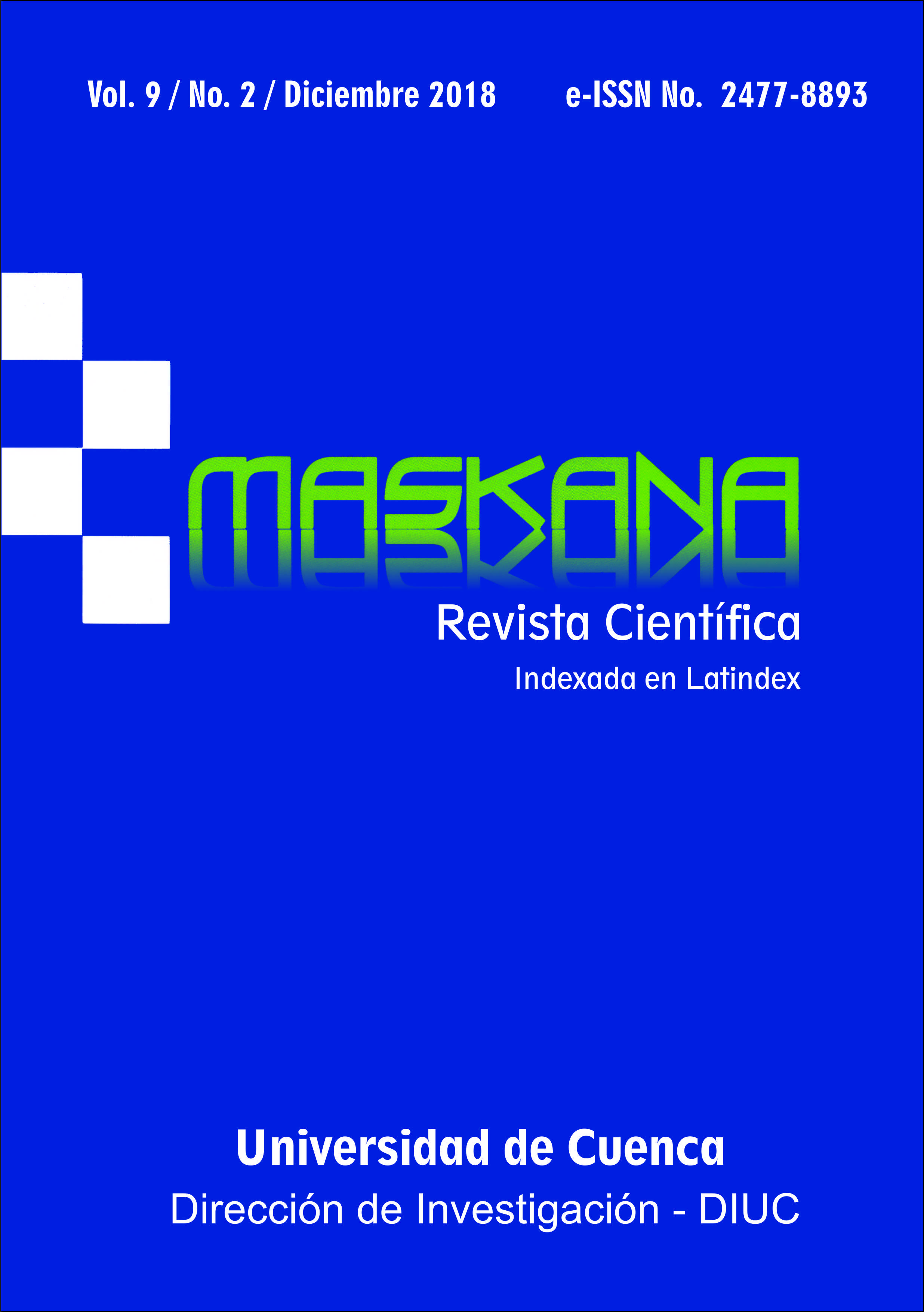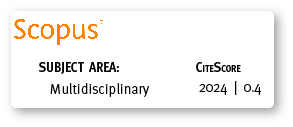Niveles de cadmio en atún fresco y enlatado para consumo humano en Ecuador
DOI:
https://doi.org/10.18537/mskn.09.02.05Palabras clave:
atún, cadmio, Katsuwonus, Thunnus, espectrofotometría de absorción atómicaResumen
Actualmente, la bioacumulación de cadmio (Cd) en peces está aumentando y es un motivo de preocupación debido a su toxicidad. El objetivo de esta investigación fue determinar la concentración de cadmio en 36 muestras de atún fresco y enlatado, provenientes de los mercados Caraguay, Puerto Pesquero Santa Rosa (PPSR) y atún enlatado de consumo nacional y de exportación. Para cuantificar la concentración de cadmio, las muestras de atún recolectadas fueron analizadas mediante el método de espectrofotometría de absorción atómica. Los niveles de concentración de cadmio de las muestras analizadas fueron comparados con la norma nacional NTE INEN 183 y 184, y con el Reglamento de la Unión Europea No 488/2014, cuyo límite máximo permitido es de 0.10 ppm Cd. En atún enlatado de consumo nacional se encontraron concentraciones de 0.441±0.046 ppm Cd y en atún de exportación 0.297±0.109 ppm Cd; sin embargo, las diferencias no fueron estadísticamente significativas (p>0.05). De igual forma, las concentraciones en atún fresco de la especie Katsuwonus pelamis fue de 0.385±0.174 ppm Cd, y de Thunnus albacares 0.295±0.187 ppm Cd en el mercado de Caraguay. Por el contrario, las concentraciones de Cd en atún proveniente del PPSR fueron mucho menores: 0.079±0.061 ppm Cd y 0.030±0.050 para Katsuwonus pelamis y Thunnus albacares, respectivamente. No hubo diferencias significativas entre el atún enlatado y fresco (p>0.05). El 66% de las muestras analizadas superaron los límites permisibles de Cd de las normas nacionales e internacionales, por lo que se recomienda mantener una vigilancia sanitaria permanente del atún en el Ecuador.
Descargas
Métricas
Citas
Araújo, C., & Cedeño-Macias, L. (2016). Heavy metals in yellowfin tuna (Thunnus albacares) and common dolphinfish (Coryphaena hippurus) landed on the Ecuadorian coast. Science of the Total Environment, 541, 149-154.
Bonnaterre, P.-J. (1788). Tableau encyclopédique et méthodique des trois regnes de la nature. Paris. Recuperado de https://www.biodiversitylibrary.org/ item/44034
Burger, J. (2008). Assessment and management of risk to wildlife from cadmium. Science of the Total Environment, 389, 37-45.
Chen, C. Y., Chen, Y. T., Chen, K. S., Hsu, C. C., Liu, L. L., Chen, H. S., Chen, M. H. (2018). Arsenic and five metal concentrations in the muscle tissue of bigeye tuna (Thunnus obesus) in the Atlantic and Indian Oceans. Marine Pollution Bulletin, 129(1), 186-193.
Clemens, S., Aarts, M. G. M., Thomine, S., & Verbruggen, N. (2013). Plant science: The key to preventing slow cadmium poisoning. Trends in Plant Science, 18(2), 92-99. https://doi.org/10.1016/ j.tplants.2012.08.003
Cope, G. W., Leidy, R. B., & Hodgson, E. (2004). Classes of Toxicants: Use Classes (Chapt. 5). In: Hodgson, E. (Ed.). A textbook of modern toxicology. Hoboken, N.J: Wiley Intercience.
FAO (1989). Nutrición y alimentación de peces y camarones cultivados manual de capacitación 1. Nutrientes esenciales. Recuperado de http://www.fao. org/docrep/field/003/ab492s/ab492s04.htm
Ganjavi, M., Ezzatpanah, H., Givianrad, M., & Shams, A. (2010). Effect of canned tuna fish processing steps on lead and cadmium contents of Iranian tuna fish. Food Chemistry, 118(3), 525-528.
Hussein, A., Khaled, A. (2014). Determination of metals in tuna species and bivalves from Alexandria, Egypt. The Egyptian Journal of Aquatic Research, 40(1), 9-17.
Kojadinovic, J., Potier, M., Le Corre, M., Cosson, R. P., & Bustamante, P. (2007). Bioaccumulation of trace elements in pelagic fish from the Western Indian Ocean. Environmental Pollution, 146(2), 548-566.
Linnaeus, C. (1758). Systema naturae per regna tria naturae :secundum classes, ordines, genera, species, cum characteribus, differentiis, synonymis, locis. (10a ed., Vol. 1). Holmiae: Impensis Direct. Laurentii Salvii. Recuperado de https://www.biodiversitylibrary.org/ item/10277
Mero, M., Pernía, B., Ramírez-Prado, N., Bravo, K., Ramírez, L., Larreta, E. & Egas, F. (2019) Concentración de cadmio en agua, sedimentos, Eichhornia crassipes y Pomacea canaliculata en el río Guayas y sus afluentes. Revista Internacional de Contaminación Ambiental, 35(4) (aceptado).
Moncayo, D., Trejos, R., Maridueña, A., & Castro, A. (2010). Niveles de mercurio, cadmio y plomo en productos pesqueros de exportación. Revista Ciencias del Mar y Limnología, 4(1).
Norma NTE INEN 0184. (1990). Conservas envasadas de atún. Disponible en https://archive.org/stream/ ec.nte.0184.1990/ec.nte.0184.1990_djvu.txt
Olmedo, P., Hernández, A., Barbier, F., Ayouni, L., & Gil, F. (2013). Determination of toxic elements (mercury, cadmium, lead, tin and arsenic) in fish and shellfish samples. Risk assessment for the consumers. Environment International, 59, 63-72.
OMS. (2010). Hay que adoptar medidas sobre productos químicos que plantean un importante problema de salud pública. Disponible en http://www.who.int/es/ news-room/fact-sheets/detail/food-safety
Pernía, B., De Sousa, A., Reyes, R., Castrillo, M. (2008). Biomarkers of cadmium pollution in plants. Interciencia, 33(2), 112-119.
Pernía, B., Mero, M., Cornejo, X., Ramírez, N., Ramírez, L. (2018). Determinación de cadmio y plomo en agua, sedimento y organismos bioindicadores en el Estero Salado, Ecuador. Enfoque UTE, 9(2), 89-105.
Pozo, W., Sanfeliu, T., & Carrera, G. (2011). Metales pesados en humedales de arroz en la cuenca baja del río Guayas. MASKANA, 2(1), 17-30.
Reglamento (UE) No 488/2014. (2014). La Comisión UE de 12 de mayo de 2014 que modifica el Reglamento (CE) no 1881/2006 por lo que respecta al contenido máximo de cadmio en los productos alimenticios. Disponible en https://www.boe.es/doue/2014/ 138/L00075-00079.pdf
Senior, W., Cornejo-Rodríguez, M., Tobar, J., Ramírez-Muñoz, M., & Márquez, A. (2016). Metales pesados (cadmio, plomo, mercurio) y arsénico en pescados congelados de elevado consumo en el Ecuador. Zootecnia Tropical, 34(2), 143-153.
Storelli, M. M., Barone, G., Cuttone, G., Giungato, D., & Garofalo, R. (2010). Occurrence of toxic metals (Hg, Cd and Pb) in fresh and canned tuna: Public health implications. Food and Chemical Toxicology, 48(11), 3167-3170.
Suhaimi, F., Wong, S. P., Lee, V. L. L., & Low, L. K. (2005). Heavy metals in fish and shellfish found in local wet markets. Journal of Primary Industries, 32, 1-18.
Voegborlo, R., & El-Methnani, A. (1999). Mercury, cadmium and lead content of canned tuna fish. Food Chemistry, 67(4), 341-345.
Publicado
Cómo citar
Número
Sección
Licencia
Copyright © Autors. Creative Commons Attribution 4.0 License para cualquier artículo enviado a partir del 6 de junio de 2017. Para los manuscritos presentados anteriormente, se utilizó la licencia CC BY 3.0.
![]()
Usted es libre de:
 |
Compartir — compartir y redistribuir el material publicado en cualquier medio o formato. |
 |
Adaptar — combinar, transformar y construir sobre el material para cualquier propósito, incluso comercialmente. |
Bajo las siguientes condiciones:
 |
Atribución — Debe otorgar el crédito correspondiente, proporcionar un enlace a la licencia e indicar si se realizaron cambios. Puede hacerlo de cualquier manera razonable, pero de ninguna manera que sugiera que el licenciador lo respalda a usted o a su uso. |
| Sin restricciones adicionales: no puede aplicar términos legales o medidas tecnológicas que restrinjan legalmente a otros a hacer cualquier cosa que permita la licencia. |
Mayor información sobre este acuerdo de autoría y licencia, transferencia de derechos o solicitudes de reproducción, pueden ser consultados en este enlace.









